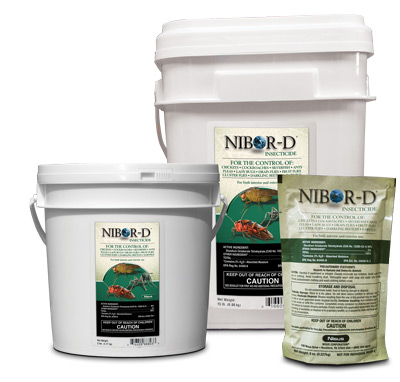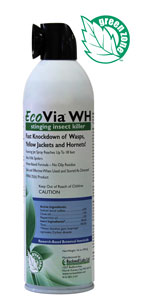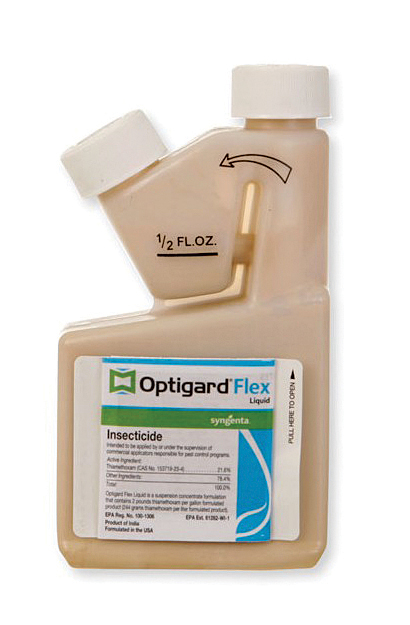Product manufacturers share what’s new — and their forecasts for 2019-2025.
We spoke with five industry suppliers to discuss strategies and equipment for treating stinging pest insects, and what trends are on the horizon for pest management professionals (PMPs). Read on for their insights and announcements. We also want to know what stinging pest control and prevention methods you’re implementing, and what you hope to add in the near future. Drop us a line at pmpeditor@northcoastmedia.net.

CONTROL SOLUTIONS INC.
Dr. Janis Reed, BCE
Technical Services Manager, Product Development Team
RECENT INNOVATION: Over the past year, Control Solutions Inc. (CSI) launched its line of aerosol products for the pest management industry. One of our first launches was our Stryker Wasp and Hornet Killer. This product is designed specifically for the pest management industry and is formulated to knock down and kill wasps and hornets. This knockdown occurs so quickly that they are unable to release the pheromone that triggers a nest-wide attack, stopping large-scale attacks. The formulation is non-conducting, so it is usable around electrical equipment. Additionally, its long spray distance of up to 20 feet and tight spray pattern mean PMPs can stay safely away from the pest and keep the application where it needs to go. CSI is constantly looking at novel, unusual and innovative ways to manage pests in the most economical way possible. Our product development team is working to solve new challenges as they develop. Our goal is to creatively solve the industry’s ever-evolving challenges with these difficult pests by deploying innovative solutions.
PREDICTIONS: Stinging pests will continue to be a major challenge to PMPs. New and novel pest management products will continue to be developed and launched, but there will be some challenges. Many questions will rise about pollinator management, specifically, when they have become a pest or moved into a structure. As we move forward, pollinator protection may limit the use and availability of products designed to control stinging pests, especially bees.

NISUS CORP.
Dr. Reid Ipser
Technical Services Director
RECENT INNOVATION: Stinging insects pose a health concern, so treatment against them requires special precaution. Nisus Corp.’s Nibor-D product can be dusted into entrances, on the nests themselves or mixed with water and sprayed on nests in various liquid or foam formulations. Applying a Nibor-D foam solution is particularly efficacious, thanks to several interactions:
- The foam itself immobilizes the insect, causing it to freeze and drop. This, in turn, makes it lose body heat and can cause death.
- The insect is forced to groom and will ingest the Nibor-D.
- Nibor-D can cause other issues, too, such as clogging the spiracles and trachea, preventing the insect from respiring and causing suffocation.
A second product, Fireback Bed Bug & Insect Spray & Jet, is a pyrethrin/permethrin-based aerosol that exhibits excellent knockdown with quick kill. Furthermore, its residual effect prevents future nest-building at the application site. Fireback can be sprayed as a direct stream or fan spray by using its adjustable use straw, giving the applicator numerous options. Fireback also will cause the insect to freeze, immobilizing and killing it.
PREDICTIONS: Future trends, which we believe already are being implemented in some cases, include using residual products as a preventive treatment on eaves and soffits to prevent nest-building. In addition, customer education about proper sanitation, including removal of clutter and the maintenance of swing sets and the like, will facilitate the prevention of nest-building.

ROCKWELL LABS
Dr. Jamel Sandidge, BCE
Research Entomologist
RECENT INNOVATION: Rockwell Labs recently introduced EcoVia WH Stinging Insect Killer jet aerosol. EcoVia WH produces a foaming jet spray that reaches up to 18 feet to cover and saturate the nest, leading to rapid knockdown and a quick kill. This versatile, research-based botanical pesticide is exempt under the Federal Insecticide, Fungicide and Rodenticide Act (FIFRA) 25(b) provision, making it especially useful for sensitive accounts that require notification. EcoVia WH is a water-based formulation that will not leave behind an oily residue, and it has been thoroughly tested and evaluated by experts both in the lab and in the field. The product is labeled for wasps, yellowjackets and hornets. Another product that has become widely used for stinging insect control is EcoVia WD Wettable Dust. This versatile, broad-spectrum formulation can be dusted directly on nests, or mixed with water and applied as a liquid spray. Whether for paper wasps found underneath the eaves of a home, ground- or wall-nesting yellowjackets, or for hornets in an enclosed nest, EcoVia WD provides rapid knockdown and residual repellency. Use it as a penetrative measure, by applying with a cobweb duster along eaves, or as a liquid to provide a repellent barrier, reducing the chances of wasp nest establishment. EcoVia WH and EcoVia WD are part of Rockwell’s Green Zone line, containing natural plant oils. They are suitable for green service programs.
PREDICTIONS: Early detection and prevention of the spread of invasive wasps, hornets and stinging insects will continue to be a major objective. Finding and eliminating aggressive species that kill and displace native bees and wasps, and those that serve as a direct threat to the commercial honey bee industry (such as the Asian hornet, or Vespa mandarinia), are a must. As education and awareness increase, early detection and swift intervention will become a priority. Stinging insects are a sensitive subject, and we foresee a trend of developing versatile, effective and targeted low-impact solutions to control invasive species while protecting our native bees and other pollinators.

SYNGENTA
Dr. Eric Paysen
Technical Services Manager, Professional Pest Management
RECENT INNOVATION: Featuring the active ingredient thiamethoxam, Optigard Flex insecticide can be used for the direct treatment of stinging wasp and yellowjacket nests. These insects are very good at defending their nests. However, Optigard Flex has an immediately intoxicating effect on these wasps. The result is subdued, non-aggressive insect behavior — and complete control in a timely manner. Optigard Flex also is an excellent solution for trailing ant treatments. We have had outstanding results for difficult species, like rover and Argentine ants. Additionally, it provides systemic activity in plants to protect against honeydew-producing insects in landscaping. As the name implies, Optigard Flex has a flexible indoor and outdoor use label. Syngenta also has a promising pipeline for developing new formulations and active ingredients. The details are under lock and key for now, but stay tuned for some exciting news to be announced soon.
PREDICTIONS: As more new homes are built in rural areas, homeowners are faced with the joys and challenges of life in natural settings. This proximity to open habitats inevitably comes with the threat of stinging pests. While some of these pests, like the Arizona bark scorpion (Centruroides sculpturatus), are more dangerous than others, PMPs carry the responsibility of protecting the public from painful pest encounters in their homes and businesses. Because the biology of stinging organisms varies from arachnids to wasps, the treatments vary as well. PMPs will need to carry a larger variety of products in their tool kit. Having the expertise to know which active ingredients and formulations are effective for different pests within their local region defines professional pest management. Syngenta has a full line of products and a nationwide team specifically for this purpose.

ZOËCON
Tony Schultz
Business Manager
RECENT INNOVATION: With the increased need for natural products, we recognize that stinging pest solutions need to be available in a green format. We launched Essentria Wasp & Hornet Spray to be an effective and natural product that can be used in sensitive environments — with a spray of up to 20 feet away for immediate kill. When it comes to stinging pests, people don’t want to wait for control. In a school, for example, PMPs don’t have to wait until school’s out to treat with Essentria products. PMPs also need products that don’t stain multiple surfaces, but do maintain a low phytotoxicity and have a far-reaching spraying distance. We plan to develop additional products to control stinging insects that meet these needs and more. Our products feature foaming action, water-based formulas that are easy on plants and a far-reaching spray.
PREDICTIONS: PMP safety is the main concern when it comes to stinging insect treatments, which is why we expect to see more products coming into the market that offer far-reaching spraying distances. Stinging insect control products need to coat the nests and nest openings to keep the pests from flying out and getting to the PMP, so foaming products also are expected. High dielectric value materials also are needed, as stinging pests often nest near power lines and electrical wires. Once again, this reinforces the importance of PMP safety.
(FEATURED PHOTO: DR. GERRY WEGNER, BCE-EMERITUS)
Leave A Comment